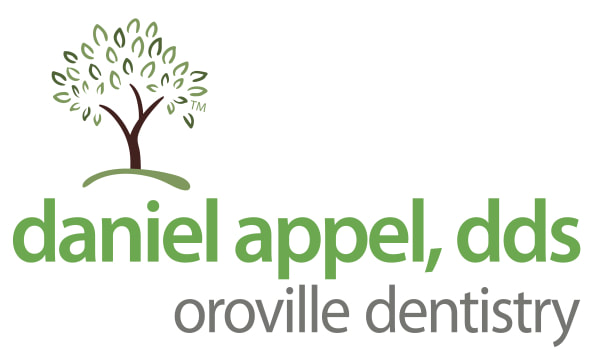Maintaining good oral hygiene for a healthy mouth and beautiful smile means consistent work each day to clean your teeth (read flossing and brushing) AND visiting your dental hygienist on a regular basis. Your dental hygienist professionally cleans your teeth, removing any spots you may have missed where debris has begun accumulating.
Patients frequently ask, “What happens during a teeth cleaning?” This is also the question often asked of children when they’re about to see a dentist for the first time. In this article, we'll take you through the step-by-step process of a teeth cleaning, from the moment you sit in the hygienist's chair to when you leave with a refreshed mouth.
Intake Process
Your teeth cleaning visit begins with completing any necessary paperwork and providing an updated medical history to your dental office. It's important that you are honest and thorough when sharing your health history, as it helps the dental team make informed decisions about your care. For example, if you are a cardiac patient who requires antibiotics after a dental cleaning, that is critical information for your dentist to have in your record.
X-rays
If it’s been a while since your last dental visit, dental X-rays will be taken to help your dentist detect any issues that aren't visible to the human eye during a visual examination. This includes cavities between teeth, problems with the jawbone, or impacted wisdom teeth. You'll have a lead apron protecting the rest of your body from the radiation, and the dental hygienist will insert the X-ray tool into your mouth in various positions to capture all your teeth.
Soft tissue and gums examination
Healthy gums and bone are essential to keeping your teeth. A good analogy would be a house. Your gums and bone are like the foundation of the house. A houses foundation must be solid for the house above to have any chance of long term survival. It's the same for teeth. The bone and tissue surrounding the teeth must be in perfect health and kept that way if you want to keep your teeth long term.
The hygienist will inspect your gums and take measurements around the teeth and gums to determine if the tissues are healthy and if they are ideally covering the roots of the teeth. Inflammation, bleeding, deep pockets, accumulation of debris and other possible sources of damage are noted and will be addressed throughout the cleaning process.
Plaque and Tartar Removal
Once the gum tissue examination and X-rays are complete, the actual cleaning begins. Your dental hygienist will start by using a small, metal tool called a scaler to remove plaque and tartar buildup from the surfaces of your teeth. Plaque is a sticky, bacteria-filled film that can lead to tooth decay and gum disease if not removed regularly. Tartar, on the other hand, is a hardened plaque and can only be removed by a dental professional.
Polishing with dental polishing paste
After plaque and tartar removal, your dental hygienist will use a rotary polishing device to clean and polish the surfaces above the gumline. The polishing paste is designed to comfortably remove microscopic remnants of plaque and polish the tooth structure to smooth finish that is easier to clean at home. This polishing process also removes stains on the teeth so they appear brighter.
Flossing
Even if you consistently floss at home, a trained dental hygienist will floss your teeth more effectively and thoroughly. They will use professional-grade dental floss to reach between your teeth and remove any remaining plaque and debris. This step is important in ensuring that every surface of your teeth is clean and free from potential dental issues.
Coaching to help you do your best at home
We all need coaching to do our best. Your hygienist will be able to give you excellent information on how you can improve your process, and locations you can focus more attention on. Your hygienist will also discuss any oral health concerns related to the gum health and solutions to help you improve.
Physical Examination
Once the cleanings are finished, the dentist will perform a comprehensive examination of your oral soft tissues and teeth. They will use a small mirror and a dental explorer to inspect your teeth and gums for any signs of dental or oral issues. This examination helps identify cavities, gum disease, or other potential problems that might require additional treatment.
This information will be combined with your X-rays, and your dentist will discuss any concerns they have noted and how to help you solve the problems. It is very important that you have the chance to ask questions and understand the current state of your mouth's health, so make use of that time to ask about any concerns you may have.
Fluoride Treatment
Fluoride is a vital mineral used to help maintain healthy teeth. After your teeth are thoroughly cleaned, your dental hygienist may apply a fluoride gel or foam to help strengthen your enamel, making it more resistant to acid and preventing cavities. You'll be asked to wait a few minutes before rinsing or eating to allow the fluoride to work.
Scheduling Your Next Appointment
To maintain optimal oral health, schedule your next dental cleaning before you leave the office. Regular check-ups and cleanings are key to preventing dental problems and catching issues early.
A thorough teeth cleaning is an essential part of maintaining good oral health. From the initial examination to the final post-cleaning care instructions, every step in the process plays a crucial role in keeping your teeth and gums in the best condition possible.
If you need a caring team to help you keep your teeth in optimal condition, please give us a call at Daniel Appel DDS, 530-533-7545. We would love to serve you!


